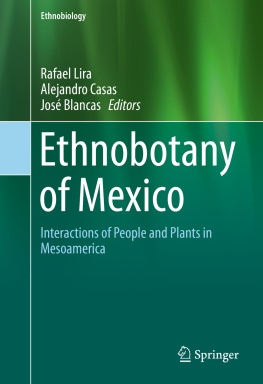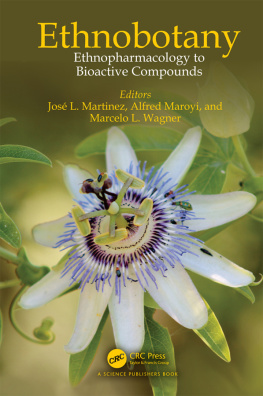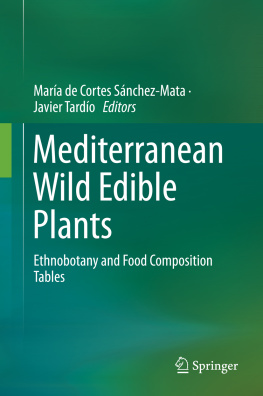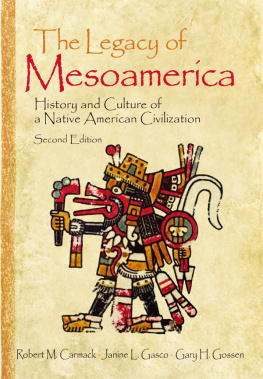1. Mexican Ethnobotany: Interactions of People and Plants in Mesoamerica
Abstract
Ethnobotany is a research aimed at understanding what people know about plants, how plants form part of their systems of beliefs and conceptions of the world, and how humans make use and manage plants for reproducing their social and cultural life. This chapter shows a general panorama of the historical use of ethnobotany in Mexico from pre-Columbian times to the modern arising of ethnobotany as a research field, as well as the main contemporary methodological approaches and challenges of researchers working on Mexican ethnobotany. Such panorama conforms an introductory context for discussing the importance and limits of this book and a general description of the contributions of the each chapter that forms part of the text. We then discuss a general perspective of the Mexican ethnobotany in order to make stronger an after description step of this research field, recognizing the importance of descriptive methods but the need of emphasizing the analytical contribution of ethnobotany on research questions connected with research fields like anthropology, archaeology, ecology, and evolutionary biology. All these are research areas requiring support from both quantitative and qualitative ethnobotanical approaches in order to analyse social and anthropological problems such as the role of natural resources in human cultures, peoples cosmovision, and their social organization and technology for interacting with ecosystems. Also, ethnobotany is necessary to ecology for studying important problems like the human influence on distribution and abundance of the flora of the world and the historical configuration of ecosystems. In addition, ethnobotany is crucial for understanding the past and ongoing processes of domestication in order to understand factors influencing the origins of agriculture. Ethnobotany is crucial for understanding evolutionary ecological processes influencing divergence between wild and managed populations of plants and perspectives of management of plant genetic resources. And finally, we discuss the general importance of ethnobotany as a bridge for building socialecological views and trans-disciplinary approaches for constructing sustainability science. Ethnobotany is a promising research field for reinforcing the human understanding of nature and society, but also for solving practical problems in the context of the worlds environmental crisis associated to global change.
Introduction
Ethnobotany is a research field that looks for documenting and understanding what people know about plants, how plants form part of their systems of beliefs, explanations and conceptions of the world, and how humans make use and manage plants, as well as the social purposes related with such interactions [].
The history of interchange of views, knowledge, and experiences of humans about using and managing plants is as ancient as the experience of using plants for survival. It was probably a crucial way to survive and, therefore, ethnobotany and ethnozoology are probably among the most ancient empirical sciences developed by humans. The modern ethnobotany in Mexico is nearly one century old, and it is a relatively new scientific field. However, it is representative of an old interest and practice carried out by the human groups that populated the Mexican territory during pre-Columbian times from prehistory to the great Mesoamerican civilizations. The early Mexican indigenous groups did not leave written records of their knowledge, but it is possible to make inferences about the importance of plant resources in their life through other type of information, archaeobotanical records being particularly important [].
The first written records of ethnobotanical studies of the world can be found among the most ancient writing of the Assyrian and Egyptian manuscripts art and artefacts [].
The earliest chronicles of the Conquest and the Spanish Colonial period, as well as the researches on the New Spain period documented, systematized, and interpreted the use of numerous plant species. Fray Bernardino de Sahagn in his General History of the things of the New Spain [] is the most important compendium of Nhuatl medicine and information on natural and cultural history of Mexico. Numerous species described included references about their medicinal properties and other uses practiced by indigenous people and that were recorded during the expedition. Unfortunately, the original manuscript and much of the unique information it contained were lost in the seventeenth century, when the library of the Escorial castle caught fire. All these classic works continue being important references for all scholars studying knowledge, practices, and beliefs of the Mexican cultures on plants.
During the sixteenth and seventeenth centuries, numerous manuscripts describing and frequently illustrating the indigenous and mestizo knowledge about plant use were produced, and all of them deserve special attention for the task of writing the history of Mexican knowledge of plants. Particularly important are the Relaciones Geogrficas del Siglo XVI (Geographic Relations of the sixteenth century) [], who included in his studies numerous species of plants and animals from Mexico.
During the nineteenth century, Mexico was involved in several wars and steps of constructing a Republic. However, some scientific activities were relevant for maintaining increasing botanical and ethnobotanical information of Mexico. Particular enormous value have the studies and sanitary campaigns by Dr. Balmis [] by the end of the eighteenth and early nineteenth centuries, mostly based on the indigenous medicine and local botanical knowledge. Mexico became Independent from Spain and lost nearly one half of its territory in a war with the US. In this period of violence, the Mexican science had generally poor advances, particularly ethnobotany, since the indigenous knowledge was considered reminiscence of an undesirable past hindering the advances of the development as considered by the both conservative and liberal sectors in the context of constructing a dream of incipient modernity.
The modern concept and practice of ethnobotany arose by the end of the nineteenth century by the influence of John William Harshberger and Edward Palmer [].
During its early stages, the modern Mexican ethnobotany dedicated most of its efforts in documenting nomenclature and information about use of plants, particularly medicinal plants []).
The most influencing work on the Mexican ethnobotanical science was undoubtedly the studies conducted by Efraim Hernndez-Xolocotzi (19131991). His studies started with the traditional agricultural systems, the first studies of Mexican vegetation and the earliest steps of the Mexican ecology []. In parallel, advances in ethnobotanical research made possible new paradigms, theories, and methods that currently have configured a particular panorama of the state and perspectives of this research field.






